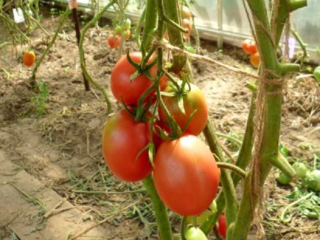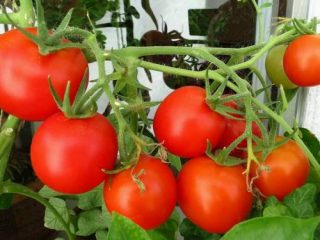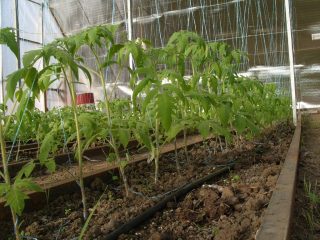Content
Everyone understands that in order to obtain a high yield, some effort must be made. Tomatoes are no exception. The environment, pests and diseases can negatively affect planted seedlings. To avoid such problems, you need to carefully prepare tomato seedlings. It's very important to start feeding seedlings even before planting, when the root system is formed, and resistance to various diseases develops. Correctly carried out fertilizing tomato seedlings will protect your plants and significantly increase productivity.
Why fertilize
Of course, you can grow tomatoes without fertilizing. If the soil is fertile, the tomatoes will grow and bear fruit. But by carrying out the necessary procedures using fertilizers, you can achieve better results.
At first, seedlings can grow quite quickly, feeding on useful substances found in the soil, however, they will not be enough for the entire period of seedling growth. It takes a lot of strength for a seed to sprout. For recovery and further development, it needs additional nutrients.It should also be taken into account that in a warm room, seedlings develop very quickly, which is why they will not have enough of their own strength.
Signs of a lack of nutrients
Experienced gardeners can immediately determine by the appearance of the seedlings that they are lacking some nutrients. In such cases, you need to act immediately to protect your harvest. The cause of a lack of microelements may be improper care, excess or lack of feeding. The problem can be identified by the following signs:
- the leaves change color, becoming light with very noticeable veins. The reason for such changes may be unsettled water from the water supply. It contains a lot of chlorine, which has a detrimental effect on tomato seedlings. Perhaps the cause is a lack of iron, which manifests itself in the same way as excess chlorine. Both cases are called by the same term - chlorosis;
- fragility of seedlings. If leaves and stems break at the slightest touch, this may indicate a lack of magnesium;
- the leaves darken and turn dark purple. This is most noticeable on the underside of the leaf. Such manifestations are possible with insufficient amounts of phosphorus;
- Lightening and falling leaves may indicate that the seedlings need more frequent watering. It may also lack light, heat or nitrogen.
When to fertilize seedlings
The first feeding is done immediately after two or three leaves appear. During this period, plants develop disease resistance. The most destructive disease for tomatoes is late blight, so at this stage you should use special preparations that help fight fungal diseases.For these purposes, it is also recommended to fertilize the soil with a copper solution.
The second feeding is done a week later. Now you can add mineral fertilizers, or use special complexes that contain both minerals and organic matter. All subsequent feedings must be carried out every ten days.
How to fertilize after picking
The picking process, of course, injures the plant. The sprout needs time and effort to take root in a new place. To restore the root system, tomato seedlings will need about two weeks. And only after that you can start feeding. For this, a urea solution is used. Further, feeding is carried out according to the usual scheme, once every 10 days. You can additionally spray the seedlings with phytosporin, this will make them more resistant to fungal diseases.
Organic matter for feeding
Feeding tomato seedlings at home is often done using conventional folk methods. Used tea leaves or an infusion of eggshells are perfect for this. The tea leaves are simply sprinkled on the soil, and then the soil itself absorbs the nutrients.
To prepare an infusion from eggshells you will need:
- 2 liters of prepared and dried shells from domestic eggs.
- 3 liters of water.
The shell is filled with water and left for 3 days. Watering with this solution will enrich the soil with calcium and make the seedlings stronger. Young nettle is also used to prepare infusions. It is simply filled with warm water and left for about five days.
Iodine for feeding seedlings
Iodine has a very positive effect on seedlings, it helps to form ovaries, and also makes plants healthy and strong. Thanks to this, productivity increases significantly. In specialized stores you can find ready-made iodine-containing fertilizers. They are very easy to use, just dilute them in the right amount of water. The seedlings should be watered with this solution from time to time.
This feeding can be done only once during seedling growth.
Ash for feeding tomatoes
This technique has been used for a very long time. The composition of wood ash includes phosphorus and potassium, which feed tomato seedlings very well. Ash also helps plants fight fungal diseases. For irrigation, use an infusion of ash, for the preparation of which you combine 1 tablespoon of ash and 5 liters of hot water. After a day, you can water the seedlings.
Conclusion
The listed feeding options tomato seedlings at home, will help you grow the most delicious and healthy fruits. Microelements obtained from fertilizers will help plants become strong and resistant to diseases and pests. So, when feeding tomatoes, you can have no doubt about the good results of your work.
Reviews
















